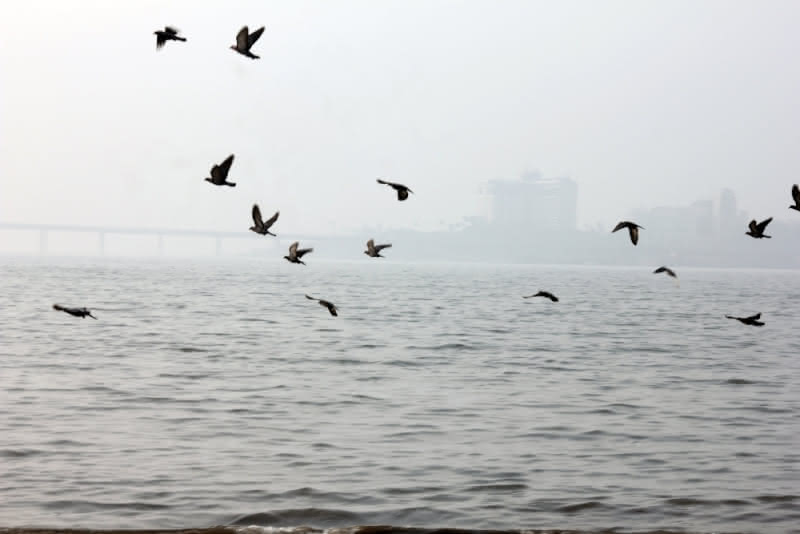On September 17, 2021, I published a piece about an 1895 article in Harper’s Round Table titled Carrier-Pigeons. That article, in the main, was about carrier pigeons in Manhattan’s Herald Square in the late nineteenth century. The author of the article, Anne Helme, included a story about a test of the usefulness of carrier pigeons on ocean steamships. In so doing, she recounted test wherein 5,000 carrier-pigeons were released from a steamship called the Manoubia, and the vast majority found their way home from the open seas. I thought that the story sounded interesting – so I looked for, and found, a contemporary source explaining what happened.

Below, I recount the story of the homing pigeons returning home from the Manoubia.
Anne Helme on the Manoubia Story
In her article, Helme explained that some thought at the time that pigeons could be useful to seafaring ships disabled in the middle of the ocean. She described one test of the idea on a steamship called the Manoubia:
An interesting article on this very subject was published recently in one of the daily papers, giving an account of an experiment that was tried and with great success. Five thousand pigeons were put on board the Manoubia, sailing from Saint Nazaire, and at distances varying from one hundred to five hundred miles were liberated.
Helme provided no further details on the story. I decided to look it up to see what I could find.
An Article About the Carrier Pigeons and the Manoubia
The Commercial Pacific Advertiser, a newspaper based in Honolulu, covered the Manoubia story in its January 26, 1897 issue. You will find the paper and the story here.
Origin of the Carrier-Pigeon Experiment
Helme wrote that the results of the experiment with the pigeons on the Manoubia were published in a newspaper. It turns out that coverage of the experiment was not only published in a newspaper, but the experiment itself was also conceived and funded by it. According to the Advertiser:
In 1895, La Petite Journal, of Paris, expended $5000 in experiments with birds. The steamer Manoubia was chartered, and 4500 pigeons were taken out to sea…
I noted one difference between Helme’s account and the Advertiser’s. According to Helme, 5,000 pigeons were taken aboard the Manoubia. The Advertiser writes that there were 4,500 pigeons, but that La Petite Journal spent the equivalent of $5,000 on the experiment.
The Experiment
After 10 days, the Manoubia began releasing pigeons in stages.
At 91 miles from land, the Manoubia released 500 pigeons. None of those 500 pigeons returned to the Manoubia – with the implication being that they proceeded toward their home.
At 125 miles, the Manoubia released 1,600 pigeons in the midst of a storm. Only one pigeon returned to the ship.
At 187 and 1/2 miles, the Manoubia released another 600 pigeons. Again, only one pigeon returned to the ship.
Finally, at 312 miles away from the shore, the Manoubia released the remaining 1,500 pigeons. Only 12 of those pigeons returned to the vessel.
The author of the article noted that none of the pigeons became seasick.
The Award-Winning Pigeon
Then-French President Félix Faure offered a first-place prize to one of the pigeons. The winning pigeon was among the last group of birds released at 312 miles from the shore. It made a 465-mile journey home, with 312 of those miles coming over water, in 15 hours and 12 minutes. The article notes that this pigeon made the trip from the Manoubia to its cote travelling at approximately 30 and 1/2 miles per hour.
While the pigeon honored by President Faure made its long journey home the quickest, the pigeons released at 312 miles generally traveled about 25 to 30 miles per hour in making their way home.
Conclusion
I was glad to find the full story of the Manoubia pigeons after reading the brief description of the experiment in Harper’s Round Table. While the pigeons that made it home from 312 miles offshore gained the greatest honor, spare a thought for the ones that were released at 125 miles in the middle of a rain and wind storm.
According to the Advertiser, there were people who believed that pigeons were reluctant to cross bodies of water based on unsuccessful experiments. However, the article opined that those experiments failed due to some pigeons not being trained properly, as there was ample evidence that pigeons could travel great distances over open water.

The French military was, by 1897, making ample use of pigeons. According to the Advertiser, the French military spent 100,000 francs annually on maintaining 3,600 pigeons in six cities. Furthermore, the United States Navy, satisfied with the utility of homing pigeons, had placed cotes on two of its warships: New York and the Constitution.